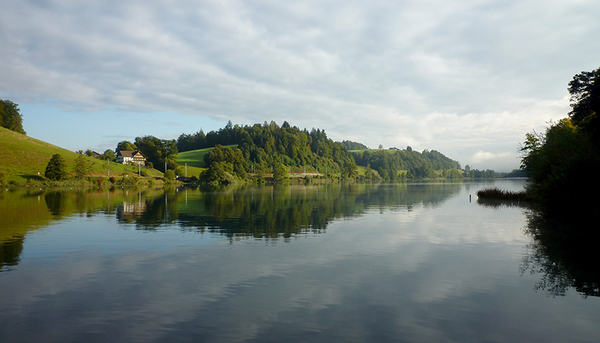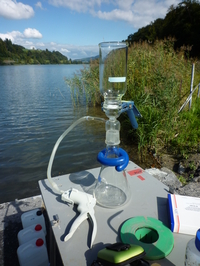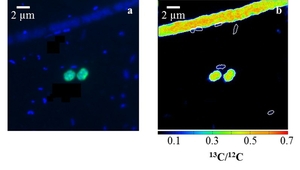News Detail
Newly discovered methane consumers in lakes
June 7, 2017 |
When decaying organic matter sinks to the bottom of a lake or ocean, methane is produced as the biomass is broken down. Some of the methane is released from the surface into the atmosphere, where it acts as a potent greenhouse gas, while some is broken down by microorganisms in the water column. In a study just published in the ISME (International Society for Microbial Ecology) Journal, an international research group reports that, as well as the “classical” methane consumers, filamentous bacteria of the genus Crenothrix – previously little studied in the environment – are also involved in the methane removal process.
Chance discovery
The role played by Crenothrix bacteria was discovered by chance, when the researchers were seeking to quantify methane removal in the Rotsee (Canton Lucerne) and Lake Zug with the aid of stable isotope labelling. In this method, methane molecules are labelled with heavy carbon-13 atoms; when 13C-labelled methane is assimilated by bacteria, the individual cells can be visualized by means of imaging mass spectrometry. “Typically,” says co-author Jana Milucka of the Max Planck Institute in Bremen, “these are small round or rod-shaped cells.” In this case, however, the bacteria enriched with 13C were not only single round cells but also long, filamentous varieties (see photo): This finding was very surprising, because at that point, the researchers didn’t know these filamentous bacteria could occur so abundantly in nature. “We then started wondering about their role in the environmental removal of methane”, says Milucka.
Commonly known as well-thread
Eawag geologist Carsten Schubert – an expert on microbial degradation of methane in water – was also surprised by the group’s findings in the two Central Swiss lakes. While the large filamentous Crenothrix bacteria have long been known, they are only familiar as a contaminant in drinking water systems (hence their name “well-thread”), where their proliferation can cause clogging of pipes, sand filters and screens. Crenothrix bacteria have not previously been detected in lake water, because they have not been specifically sought and they are difficult to identify with molecular genetic methods. Schubert concludes: “We seem to have completely underestimated their role in the biogeochemical cycle.” The researchers have now shown that Crenothrix are not only a stable part of the microbial community in freshwater lakes but may also be the most important methane consumers.
Original publication
Kirsten Oswald, Jon S Graf et al.: Crenothrix are major methane consumers in stratified lakes; ISME Journal (2017) 00, 1–17. http://dx.doi.org/10.1038/ismej.2017.77
Micrographs showing the methane oxidizers discovered in Lake Rotsee. Left: The “classical” bacteria responsible for methane uptake are small and round. Right: 13C‑labelling combined with mass spectrometry reveals that methane is also assimilated by much larger, filamentous Crenothrix. The small blue (left) and white‑outlined structures (right) are non‑methanotrophic bacteria.



